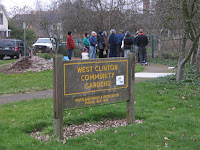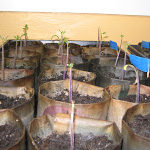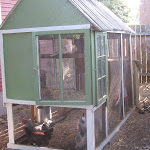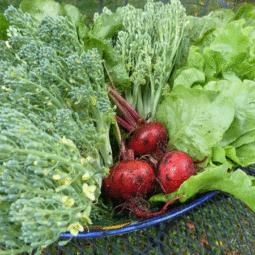 As mentioned earlier, I attended the Fruit Tree Pruning class this morning that was being offered for FREE through Portland Parks & Recreation. It started at 9:00 this morning, which was a little rough for me on a Saturday. Our power went out sometime last night too, so my alarm never went off. I actually made it there on time, but my hair was sopping went still which was not ideal on a cold, winter morning with the temperature hovering around a chilly mid-30’s.
As mentioned earlier, I attended the Fruit Tree Pruning class this morning that was being offered for FREE through Portland Parks & Recreation. It started at 9:00 this morning, which was a little rough for me on a Saturday. Our power went out sometime last night too, so my alarm never went off. I actually made it there on time, but my hair was sopping went still which was not ideal on a cold, winter morning with the temperature hovering around a chilly mid-30’s.
 I was pleasantly surprised at the strong turnout and I learned a lot. Here is a recap of some good information I didn’t know before attending:
I was pleasantly surprised at the strong turnout and I learned a lot. Here is a recap of some good information I didn’t know before attending:
- Apples and pear trees can be pruned now, in January
- Stone fruit trees, like cherries, plums, peaches, should be pruned a month or two from now. Pruning now means these cold dips in the weather could damage the cuts made from pruning, as these trees are not as cold-hardy.
- The little nub where the branch joints another bigger branch is called the “collar”. When you make a cut, you want to get right up against the collar, but not cut into the collar. The collar is a natural healer for the tree and will heal over the wound from the cut.
- The best angle for tree branches to produce fruit is somewhere between 45-60 degrees. Therefore, you should prune off branches running straight up and down, as they will never produce a lot of fruit.
- Generally, fruit tree pruning can be done in both winter and in the summer, but not in fall or spring.
- Winter pruning invigorates tree growth. The tree is dormant in the winter, so all the sap is being held within the center of the tree. In the summer, the branches you cut will have sap in them so you will be cutting out some of that energy, resulting in less immediate growth.
- When cutting off a branch, make your cut at an angle, so water cannot collect on the top of your cut. Collected water encourages mold and other disease.
When cutting a branch, cut in three steps:
- Step #1: Make an undercut about 1/3 of the way into the branch.
- Step #2: Cut the whole branch off a few inches away from that undercut, to take the weight off.
- Step #3: Cut from top to bottom next to the collar, down to the undercut.
By this method, you minimize the chance of the branch falling down during pruning and taking bark off with it, which damages the tree.
This winter, I will try to spend more time just looking at the tree to determine which larger branches should be trimmed. I will consider the ideal branch angles for fruit production, as well as keeping the interior of the tree open for air circulation and taking into account the overall aesthetics of the tree. With some construction projects going on inside, I will have to wait for another (hopefully warmer) weekend to set in on my pruning for the season.
If you have pruning tips of your own for fruit trees, please share! I need all the help I can get.




 This has become my
This has become my
 This is from South
This is from South


 All the ornamental grasses get cu
All the ornamental grasses get cu




Great information regarding fruit trees and pruning! The Portland Parks and Recreation sounds like a top-notch organization to offer such classes. I’m enthused that there was a good turnout. We need more classes like the one you attended throughout the country!
Great tips on tree pruning. Making a proper cut near the collar is crucial as you pointed out.
When pruning fruit trees, work on opening up the top of the tree in addition to the inside. This helps light from above to reach fruit within the tree.
I am attending a similar class in the UK, really looking forward to it. Hopefully it will kick start my career.
great article of tree frunings. I really like this thanks for sharing